 Many Victorians who lost friends and family, and know people who lost houses in the 2009 furnace in Victoria are appalled at some of the recommendations issuing from the Royal Commision Final Report. They are trying to find solutions that match the enormity of the increase in bushfire threats of the future. Inform yourself with this analysis of the 2009 Victorian Bushfires Royal Commission Report and Recommendations!
Many Victorians who lost friends and family, and know people who lost houses in the 2009 furnace in Victoria are appalled at some of the recommendations issuing from the Royal Commision Final Report. They are trying to find solutions that match the enormity of the increase in bushfire threats of the future. Inform yourself with this analysis of the 2009 Victorian Bushfires Royal Commission Report and Recommendations!
Analysts in the field are calling for new ideas and asking Victorians to be wary of obsessing about yesterday’s solutions, which haven’t worked or are still scientifically unproven).
Safety lies in scientific, not simplistic solutions
Thoughtful people say that before land management is altered we need evidence and scientific knowledge before repeating unproven solutions. Fire management must be different for each landscape, taking into account that there are 300 different vegetation types across Vic.
Burning off a ritual to ward-off evil but not a real solution
Calls for burning-off as a solution lack science and evidence. They are like warding off evil by burning incense, but they do a hell of a lot more damage, whilst doing little if any good. Burning gives a false sense of security by cultivating a mistaken belief that it will make people safer. Fire experts appointed by panel all agreed that prescribed burns wouldn’t reduce fire severity on extreme fire danger days.
New extreme weather conditions need useful, not political or superstitious responses
CSIRO and BOM study of 2007 says Victoria faces up to 65% more days of extreme fire risk in the next decade. Extreme weather conditions are unfortunately Victoria's new future. Politicians need to accept this reality and allow the delivery of new solutions to match, instead of simply legitimating inadequate traditional responses from their politically positioned beneficiaries.
Declaring war on forests and the environment and trying to alter nature is ineffective and could add to problem.
Fact: Arson and electricity problems, not trees, cause loss of lives
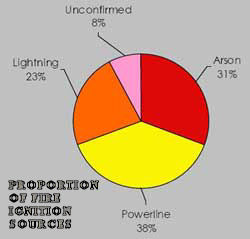
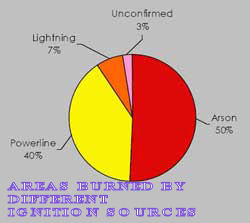
Contrary to the folklore of forests as a danger in themselves circulated by the logging, real-estate and agribusiness industries, it turns out that arson and power line failures are far and away the greatest cause of total areas burnt and loss of lives.
We need to control the sources of the fires - the arsonists and the power-line incidents - not the forests which keep our country cool and watered and stop carbon emissions.
Australians need to beware of politically and commercially motivated scapegoating of groups, such as 'environmentalists' and 'greens' because these tactics are used to avoid and postpone real solutions, whilst protecting bad habits in the commercial world.
We cannot afford to have commercial beneficiaries of forest-destruction, such as land-developers, loggers and agribusiness take our future hostage. We have to take democratic and political control to ensure that rational solutions are used to tackle a new future of extreme weather conditions.
Extreme weather conditions in January/Feb 2009
Fires tragically claimed 173 lives, damaged or destroyed more than 2000 properties and 61 businesses, burned through entire towns and affected 430,000 hectares of land throughout Victoria. Disasters on this scale do not occur in isolation, but are the result of preceding events and conditions.
The 7th & 8th of February 2009 were the hottest days on Victorian records. These terrible conditions which many of us recall were exacerbated by high winds and very low humidity. Most meteorologists think that these conditions were less a drought than a permanent trend of drying. Many believe that they were signs that climate change is here.
The general conclusion by responsible scientists and other environmentalists is that we all need to work together to find best way to deal with this frightening but unavoidable reality.
Shocking facts about the Royal Commission into Victoria's 2009 Bushfires
Royal Commission recommendations into the Victorian Bushfires seem politically driven not scientific
The Royal Commission’s team of experts admitted that on days of such extreme conditions, control burns were useless. So why did the Commission recommend threefold increase in so-called controlled burns?
Was this Royal Commission politically driven even in these shocking circumstances that demanded rigorous honour, compassion and honesty?
Observers say that the Royal Commission ignored the fact that the major danger around towns and settlements was not old growth forests, but - to the contrary - plantations and the flammable re-growth from logging!
The fires that came out of these plantations killed 11 people.
Yet the fire-risk they caused and continue increasingly to cause was not examined by the Commission!
Shocked observers feel that this strange omission can only be explained by the wish by the authorities to protect commercial interests vested in plantation assets.
Bizarre and irrelevant focus on native forests on public land ignored major causes and areas of bushfires
The one dimensional nature of the Royal Commission's focus on just native forests on public land for prescribed burning will do nothing to lessen the fire risks that the other land tenure types pose.
Priority attention needs to focus on deadly powerlines
SEVENTY PER CENT OF BLACK SATURDAY'S DEATHS WERE DUE TO POWERLINES!
Much can be done to reduce the risk of power line sparks in hot windy weather. Attention to this would provide the most effective protection against fires in the future!
Media, including public media, has a responsibility for ongoing fatalities by bushfire
The commercial and public media (the ABC) should provide objective information. At the moment all mainstream media and the government favour sources from the pro-logging and commercial forestry lobby. This lobby unconscionably pushes an over-simplified message about fuel reduction burns that is UTTERLY IRRELEVANT to saving lives, or preventing firestorms on days like Black Saturday.
Critique of Recommendations from the Commission
Although there have been some good recommendations, some are very bad. Others seem to be largely padding.
Bushfire Safety Policy.
Recs 1-4 and 6-7: Mostly sensible and relatively obvious, on education, safety policy revision, evacuation and shelters, looking after the vulnerable and elderly, standards for community refuges.
Rec 5 is a bit ambiguous on the subject of evacuations.
Emergency and incident management.
Recs 8-19: These discuss internal processes to be improved, such as the Department of Sustainability and Environment and or the Country Fire Authority (DSE/CFA) needing better coordination.
Fireground response
Rec 20-26: Fast response by aircraft – put on standby, look at engaging Defence Department to help, more inter-agency communication, radio black-spot problem looked at etc.
Rec 24 & 25: Dangerous incidents including back-burns (obviously a problem in the past) be fully investigated, and no back-burns lit until IC gives approval (implies past mistakes with cowboys lighting up and creating bigger fire front. Hearsay has it that 50% of fire area in 2003 and ‘06 caused by back burns).
Electricity caused fires.
Recs 27-34: Underground or bundled power lines – priority in high danger zone – to be replaced within 10 years. Power utilities to improve relevant performance with inspections every 3 years. Advice to cut down even more trees along power lines that are outside of clearance zone ‘just in case’. Councils also advised to cut down ‘hazard trees’ around lines, as well as to install spreaders and vibration dampers as soon as possible on power lines.
Deliberately lit fires.
Recs 35-36: These recommendations make noises that sound like huffing and puffing about better arson prevention and detection and police training but don't give details.
The Report gives more practical suggestions, such as police patrols.
Planning and Building.
Recs 37-55: Planning, mapping, bushfire risk, council controls, CFA input ... etc. Recommendation 39 talks about “substantially reducing development in areas of highest risk – giving due consideration to biodiversity conservation...”
It may seem picky, but it is hard to see how these two things are logically or logistically connected.
Rec 39-40: Discusses minimal lot size to allow for ‘defendable space’. Does this mean permanent moonscaping? (A good way to heat up the earth.)
Rec 41: Amend planning regulations to let more tree clearing permits through where fire threat is a priority. Looks for a maximum level of permissable clearing.
Rec 42: Mention of “collective offset solution” (?) when native veg cleared.
Rec 43 – This is one for the cynics!
DSE to “conduct biodiversity mapping to identify ...threatened species throughout Vic...”
State and local government have demonstrated lack of will or allocated resources to do this even in small areas where it’s critically important. The Department of Sustainability and the Environment have been shown by Auditor General reports in 2009 and the Minister for the Environment's responses to be unwilling or unable to carry out such an immense survey and mapping exercise.
Thus this recommendation seems naively founded on ignorant overestimations of DSE's competence, power and resources. Or worse, it simply continues to use DSE as a convenient front to cover inaction with a pretense of good intentions.
Man or Mouse - no contest

Will Brumby reject or set up such a Mickey Mouse type biodiversity mapping exercise?.
Rec 44: Fire resistant plants list to be produced by the CFA. Don't the bushfires already produce fire-resistant vegetation and isn't this part of the problem of our drying environment? Old-growth forests (by definition) do resist fire, but this is not what is meant by the commission, unfortunately.
Rec 46: Buy-back land and settle people elsewhere in high risk zone – non compulsory.
No mention of funding fire-bunkers.
Rec 47- 55: Building codes, overlays, etc
Land and fuel management - a pyromaniac's guide
Recs 56 – 62: Currently about 1.5% of land is burned annually. This is a huge amount. The Commission has recommended that the area to be crudely devastated in this way by human agency may be increased up to 5%, or 3 x increase!
Why was more burning advocated despite the Royal Commission’s expert panel earlier admitting there was little evidence that control burns achieved anything on the extreme days Victorians will face in the future?
Cynics will say that it's no surprise that the Royal Commission is politically driven, but Victorians should march on Parliament in outrage.
Rec 57: Annual report on targets and “impacts on biodiversity”! We cannot say what the impact of a burn was for years afterwards. As the report says, there is a need baseline data, seasonal monitoring, and surveys on many diff veg types, aspects, areas etc.
At least they admit they don’t have the necessary information, but this doesn't stop them making dangerous recommendations about burning off.
The current monitoring looks only at plants. It does not look at micro-fauna, fungi, insects, frogs, reptiles, birds and the ground mammals that are most heavily impacted when huge areas of forest are ‘control burnt’.
Rec 58: DSE to improve its long-term data collection to monitor the effects of its burns and of bushfires. As mentioned above, DSE' current data collection is almost non-existent and next to useless.
DSE does not monitor the impact of fire on loss of ground cover and on the soil life that depends on healthy leaf litter. It doesn't look at how the vegetation that grows back after a fire is thicker, more flammable i.e. "fire-adapted."
Risk analysis model lacking holistic context could promote commerically motivated abuse
Rec 59: Contains a risk analysis model which gives humans priority over the [read 'natural'] environment where there’s a dispute.
The dangers of this model are obvious. Without a healthy natural environment we will all perish and the risk of commercially vested interests using this model to devastate natural forests and make them loggable or clear them for housing and agriculture is a well-known one which the commission, in good faith, should have avoided.
Recommendation 60 promotes annual destruction of roadside vegetation
Rec 60: Revised Planning regulations allow major vegetation clearing along roads under the guise of fire safety. This is often where the last remnant strips of original vegetation survive in farmland. Such actions will raise the water table and promote more drying.
Rec 61: Discusses getting the Federal government to solve conflict over destruction of valuable roadside vegetation and to modify the already tattered Federal Environment Protection and Biodiversity Conservation Act (EPBC) to allow protected vegetation to be destroyed annually!
Rec 62: That VicRoads, which is an organisation that has no core ecological or environmental expertise, do risk assessments along roadsides.
Organisational structure.
Recs 63 – 64: Monitoring and implementation.
Rec 66: Auditor General or other ‘independent’ body report back on the progress of these recommendations by July 2012.
Age letters [email protected]
Herald Sun [email protected]
Talkback on Gippsland ABC 1300 295 222 or text in 197 22 842
Melb talkback on ABC 1300 222 774
Drive show – regional Vic 1300 303 468
Or make your comments here on this article and send the article around to politicians and friends to publicise the absurdities, cruelties and dangers in these recommendations.



 Congratulations Jill Redwood, leader of Environment East Gippsland! In a landmark decision today, the Supreme Court has found that the government has a responsibility to look for and protect endangered wildlife before logging in the contentious Brown Mountain forests of East Gippsland. “This
Congratulations Jill Redwood, leader of Environment East Gippsland! In a landmark decision today, the Supreme Court has found that the government has a responsibility to look for and protect endangered wildlife before logging in the contentious Brown Mountain forests of East Gippsland. “This 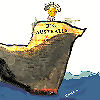 According to some of Australia's most widely published journalists and many opinion polls, the Liberal and National Parties were thrown out of office largely because of voter objections to their policies, notably their anti-union "Work Choices" laws.
According to some of Australia's most widely published journalists and many opinion polls, the Liberal and National Parties were thrown out of office largely because of voter objections to their policies, notably their anti-union "Work Choices" laws.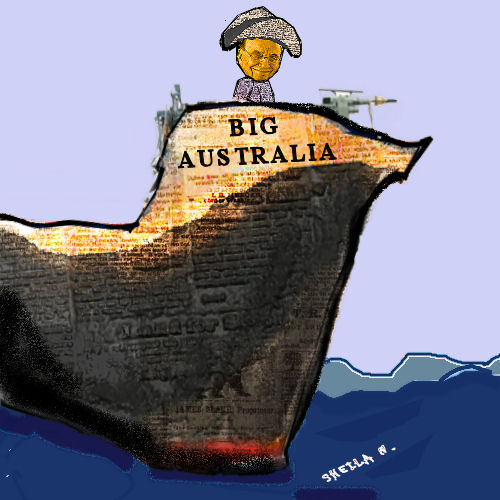
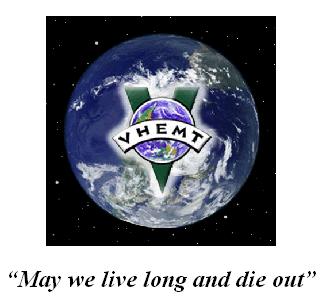
.jpg)
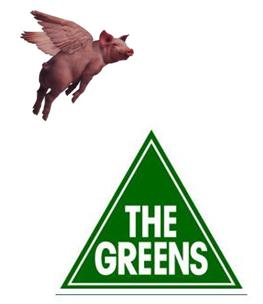
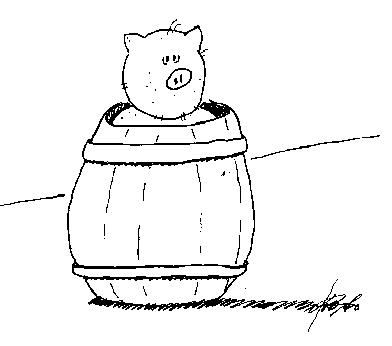


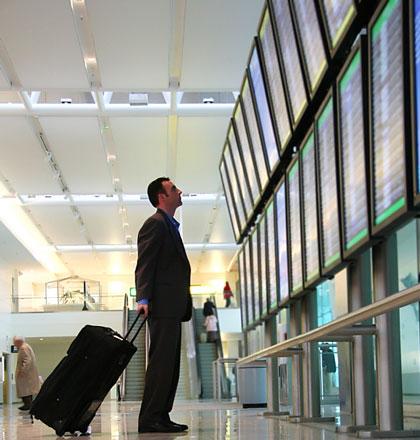
 Many Victorians who lost friends and family, and know people who lost houses in the 2009 furnace in Victoria are appalled at some of the recommendations issuing from the Royal Commision Final Report. They are trying to find solutions that match the enormity of the increase in bushfire threats of the future. Inform yourself with this analysis of the 2009 Victorian Bushfires Royal Commission Report and Recommendations!
Many Victorians who lost friends and family, and know people who lost houses in the 2009 furnace in Victoria are appalled at some of the recommendations issuing from the Royal Commision Final Report. They are trying to find solutions that match the enormity of the increase in bushfire threats of the future. Inform yourself with this analysis of the 2009 Victorian Bushfires Royal Commission Report and Recommendations!



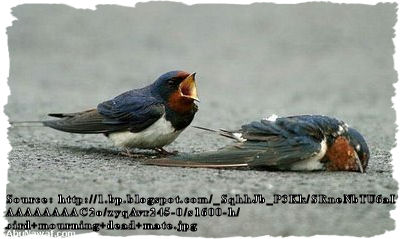

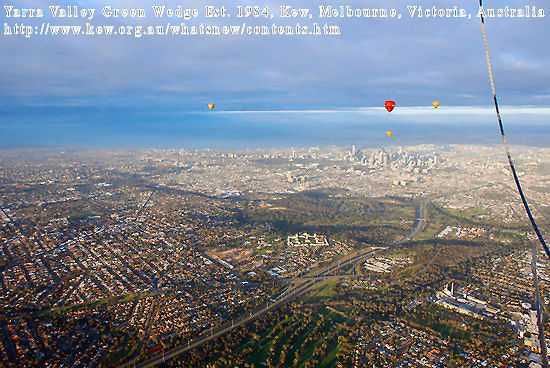
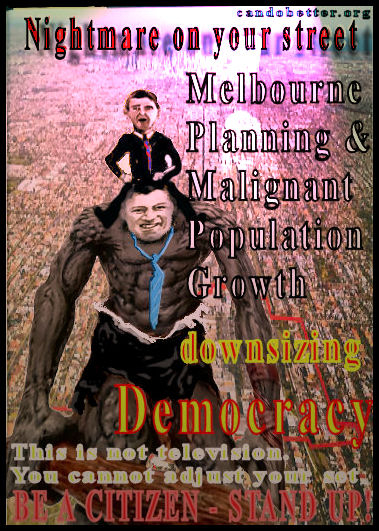




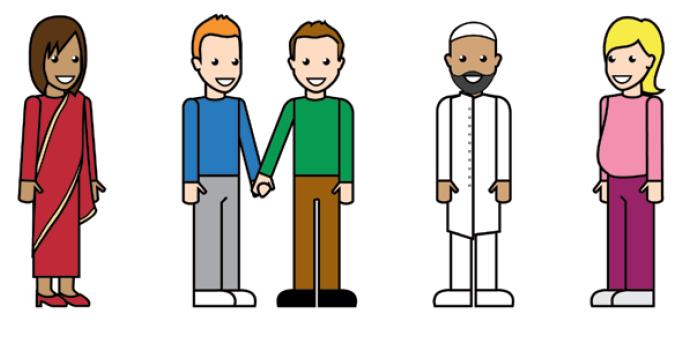
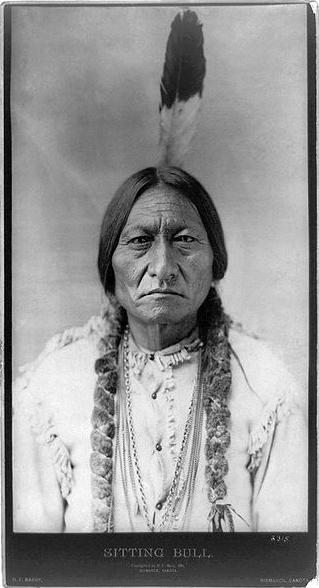

 How our taxes are used in hospitals and other prevention and treatment modalities is of almost as much importance as how our access to shelter and food are or are not guaranteed by our political systems. The Public Health Association of Australia has a broad interpretation of public health and is thus interested in population policy and housing. It is important to support the PHAA to influence public policy in all of these areas. The Association has a network throughout Australia, in rural and urban areas. As such it is among several organisations which has some potential to combat aspects of the property and finance based Growth Lobby in Australia.
How our taxes are used in hospitals and other prevention and treatment modalities is of almost as much importance as how our access to shelter and food are or are not guaranteed by our political systems. The Public Health Association of Australia has a broad interpretation of public health and is thus interested in population policy and housing. It is important to support the PHAA to influence public policy in all of these areas. The Association has a network throughout Australia, in rural and urban areas. As such it is among several organisations which has some potential to combat aspects of the property and finance based Growth Lobby in Australia. Click on picture to see film.
Click on picture to see film.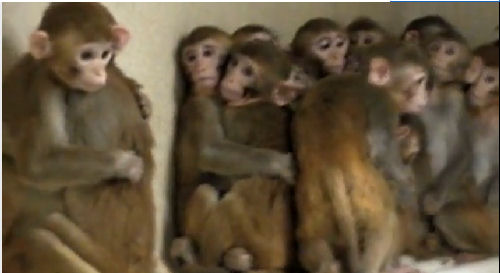 Click on picture to see film.
Click on picture to see film.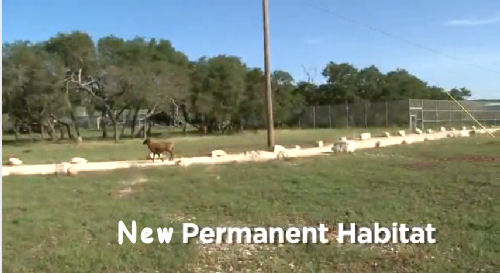
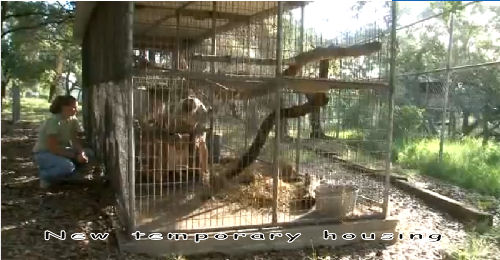
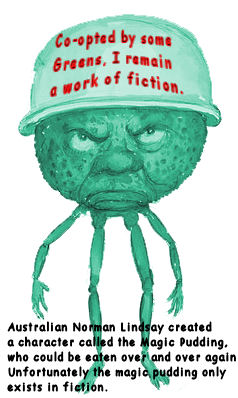 Neither The BC Liberals Nor the NDP Will Question The Population Growth Which Drives Energy Consumption
Neither The BC Liberals Nor the NDP Will Question The Population Growth Which Drives Energy Consumption
Recent comments